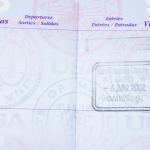Hey there! Moving to the U.S. as an expat woman is a big step—I know, I’ve been there. When I first arrived, figuring out expat housing U.S. felt overwhelming. The market’s huge, with everything from sky-high rents in New York to quiet suburban homes in Texas. Whether you’re here for work, with your family, or just chasing a fresh start, finding a place to live is your first hurdle—and I’m here to help you clear it. I’ve navigated the chaos of unpacking in a new country, and I’ve learned a thing or two along the way. This guide’s all about making expat housing U.S. less daunting—think temporary rentals, smart budgeting, and even buying a home if you’re ready to plant roots. Let’s walk through it together, step by step, so you can feel at home in no time.
1. Starting with Temporary Housing
Those first few weeks in the U.S. can be a whirlwind, and you’ll need somewhere to land while you get your bearings. Here’s what worked for me:
Short-Term Rentals Made Simple
When I got here, I wasn’t ready to commit long-term—I needed time to explore. Short-term rentals were my lifesaver: think Airbnb for cozy furnished apartments, extended-stay hotels like Marriott Residence Inn, or corporate housing via Relocately. They’re flexible, usually 1-6 months, and perfect while you decide if you love the city buzz or a quieter spot. No U.S. credit history yet? That’s okay—these options often skip the tough checks. Just be cautious—scams pop up on sites like Craigslist, so double-check listings (FBI Rental Scams).
Your Safety Net
The U.S. Department of Housing (HUD) has some rules that might help. If your temporary stay stretches past a year—say, due to construction—you could qualify for moving cost support under the Uniform Relocation Assistance guidelines (HUD Relocation). Look at 49 CFR 24.2(a)(9)(ii)(D) to ensure your lease covers basics like utilities and privacy.
Pro Tip: Always ask for photos or a video tour—peace of mind is worth it.
2. Budgeting for Your New Home
Money’s a big piece of the expat housing U.S. puzzle, and it varies so much depending on where you are. Let’s break it down:
Costs Across the Country
Rents can feel like a rollercoaster—$3,500 a month for a one-bedroom in NYC, but maybe $1,200 in suburban Ohio or Texas (Expat Arrivals). I learned to aim for 30% of my income on housing, leaving room for extras like security deposits (1-2 months’ rent), broker fees (common in cities), and utilities ($100-$300/month). Without a U.S. credit score, some landlords asked me for more upfront—sometimes 2-12 months’ rent (InterNations).
Dealing with Currency Swings
If you’re paid in another currency, exchange rates can throw you off—I felt that sting! I used Wise to transfer funds and watched rates closely. For bigger moves like a mortgage, rates might be 1-2% higher without U.S. credit, but showing international bank statements helped me (XE Blog).
Pro Tip: Open a U.S. bank account ASAP—it simplifies everything.
3. Renting: Know the Rules
Renting here can feel tricky, but once you get the hang of it, it’s manageable. Here’s what I learned:
Understanding Your Lease
Leases vary by state—some, like California, cap rent hikes, while others, like Texas, don’t. I always check for pet rules (I miss my cat!), subletting options, and who fixes what. In places without rent control, renewals can jump, so I align my lease with my visa term (InterNations).
What You’ll Need
Landlords want proof you’re good for the rent—job contracts, bank statements, or past rental references. No U.S. credit? I used my employment letter and extra deposit instead. The HUD Handbook 1378 has resources if you’re displaced—super helpful for paperwork (HUD).
Pro Tip: Skim your lease with a friend—or a lawyer if you can—it’s worth the clarity.
4. Furnished or Unfurnished?
Deciding what comes with your place is a big part of expat housing U.S.—here’s how I figured it out:
Balancing Cost and Comfort
Furnished apartments were tempting—no furniture shopping!—but they cost 15-30% more. I went semi-furnished once—a bed and table included—and added my style with IKEA later. For longer stays (2+ years), unfurnished saved me money, though shipping my stuff cost a bit ($200-$500/month) (Expat Arrivals).
Appliances and Setup
Most places have a fridge and stove, but washers? Not always—I’ve hauled laundry to a laundromat before! Utilities (electricity, water, internet) can take weeks to hook up, so I used Lemonade to speed things along (Expat Network).
Pro Tip: Ask about laundry—it’s a game-changer!
5. Choosing Your Spot
Where you live shapes your U.S. life—here’s what I considered:
Safety and Convenience
I needed a neighborhood close to work and a decent grocery store. NeighborhoodScout showed me crime stats and school ratings (handy if you’ve got kids). Expat groups like InterNations tipped me off to welcoming areas. In flood zones like Florida, I checked FEMA Maps—insurance skips water damage otherwise (XE Blog).
Getting Around
Cities like San Francisco have awesome transit—$2-$3 rides beat driving. Suburbs meant a car for me—gas, insurance, parking added up ($100-$300/month). I love Walk Score for finding walkable spots (Relocately).
Pro Tip: Visit at rush hour—you’ll feel the commute vibe.
6. Settling In: Practical Stuff
Expat housing U.S. isn’t just walls—it’s the little things too.
Navigating the System
You’ll need an SSN or ITIN for leases and utilities—I rushed mine because delays held up my rental app (InterNations). Local expat meetups taught me quirks like recycling bins—small wins!
Healthcare Access
Healthcare’s pricey here—$200+ without insurance—so I picked a spot near a clinic. My employer’s plan covered locals, but ACA options work too (Expat Network).
Pro Tip: Push for that SSN—it’s your golden ticket.
7. Buying a Home: Your Long-Term Nest
Ready to stay? Buying expat housing U.S. was my next leap—here’s how:
Mortgages as an Expat
You can buy, but banks want 30-50% down and charge 1-2% extra without U.S. credit. I showed international records, and portfolio loans helped when my income was patchy (XE Blog). Realtors who know FIRPTA kept taxes straight (Relocately).
Checking It Out
I hired inspectors—old homes hide leaks and bugs. Title checks saved me from ownership drama (InterNations).
Pro Tip: Save a buffer—repairs hit $5,000+ fast!
Quick Guide: Expat Housing U.S. Options
| Option | Cost Range | Best For | Pro Tip |
|---|---|---|---|
| Short-Term Rentals | $1,500-$4,000/mo | First 1-6 months | Ask for a tour, skip scams |
| Furnished Apartments | $1,800-$5,000/mo | Quick move-in | Weigh long-term savings |
| Unfurnished Rentals | $1,200-$3,500/mo | 2+ years, your style | Plan furniture costs |
| Home Purchase | $200K-$1M+ | Long-term roots | Inspect everything |
Wrapping Up: Your Expat Housing U.S. Journey
Finding expat housing U.S. takes time, but you’ve got this. Start with a temp place, budget wisely, and lean on tools like SheBeyond for expat sisterhood—we’ve all been there! Whether it’s a rental in Miami or a house in Denver, you’ll make it home.
JOIN NOW
Let’s settle in together—you’re not alone!


